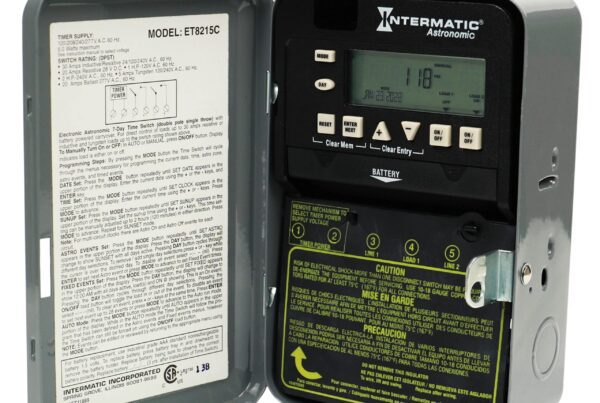Introduction to Lighting Controls
Lighting controls are tools and comprehensive systems designed to add versatility to LED lighting setups, catering to energy savings and user requirements. These systems work by receiving signals — which users can manually set or automatically trigger by factors like time, room occupancy, natural light availability, or integration with an energy management system. Based on these signals, they adjust the lighting by turning lights on or off, dimming them, or sending specific control commands. The mix of different inputs and the adjustments they trigger allows for a range of lighting control strategies. These strategies make lighting more adaptable to our needs and offer significant savings on energy costs.
LED Lighting Control Strategies
Projects that use LED lighting controls often combine several strategies within the same area to meet both energy regulations and the property owner’s preferences. Each approach is tailored to enhance occupant comfort, meet visual needs, and manage energy consumption—sometimes achieving all three objectives. Below are some examples of popular lighting control strategies that are regularly implemented:
Occupancy and Vacancy Sensing
These simple sensors ensure that lights only operate when occupants are in a room. In addition to basic occupancy sensing, ultrasonic sensors detect sound, and infrared sensors detect heat and motion. Easily added to individual LED lights or the room itself, occupancy sensors are ideal for areas not constantly used, like conference rooms, storage areas, or restrooms. These lighting control systems can also be applied to parking lot applications, wall packs, and stairwell luminaires.

Daylight Harvesting
Daylight harvesting controls automatically adjust lights based on the available daylight coming into the room. As the sun rises and sets, the lighting control system changes to maintain predetermined light levels for the space. Daylight harvesting is best suited for areas adjacent to windows, under skylights, or wherever outside light is consistent.

Astronomical Time Clock Scheduling
This lighting control system strategy provides pre-programmed changes to light levels based on the date and time of day. A time clock schedule is suited to larger spaces that are regularly occupied and spaces that are occasionally occupied but must keep lights on for safety and security purposes.

High-End Trim & Task Tuning
This lighting control strategy sets the maximum light level based on mandated requirements for a particular room or zone. In addition, task tuning analyzes the light needs in each space and dims various areas based on condition.

Personal Dimming Controls
Personal control over the lighting control system allows occupants to adjust the light output to their comfort level. Often found with dimming switches local to the room where the occupant is.

Networked Lighting Controls
Networked lighting controls (NLCs) combine multiple LED lights and blend the different lighting control strategies based on the space requirements. By combining LED lights, controls, connectivity, and data, these flexible lighting control systems can improve occupant comfort and space utilization. Networked lighting controls often include occupancy sensing, daylight harvesting, continuous dimming, and more.

Are you ready to make your LED lighting more adaptable, energy-efficient, and tailored to your needs?
Explore how our comprehensive lighting control solutions can transform your space. Discover the potential of occupancy sensors for underutilized areas, leverage natural light through daylight harvesting, ensure safety with astronomical time clock scheduling, and personalize your lighting experience with dimming controls.
Don’t miss out on the opportunity to reduce energy costs while improving the functionality and comfort of your environment. Contact us today for a no-cost assessment and see how our lighting control systems can be customized to fit your project’s specific requirements. Switch to smarter lighting solutions and illuminate the path to energy savings and enhanced space utilization.

